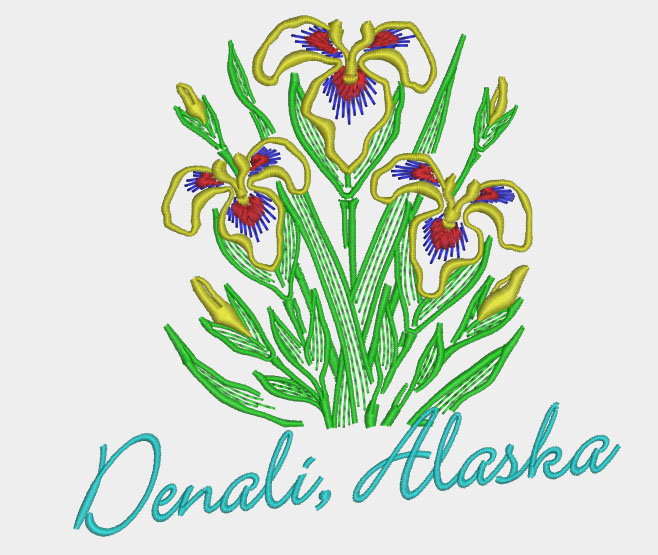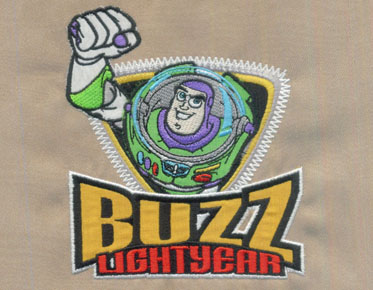Flower Embroidery Designs That Are Easy to Make
Are you the type of person who loves strolling through a beautiful garden and admiring the flowers? We’re with you! However, if you wish you could pick them up and affix them to your shirt, we unfortunately have bad news. Unfortunately, there still isn’t an easy way to move real flowers from their native soil onto clothing; fortunately, there are some great ways to bring their lovely blooms into your embroidery digitizing.
Of course, many times we want to create the perfect image in a graphic, logo or cartoon. Today, we're focusing on "Perfect Imperfect" and give you some ideas to make your embroidery look more realistic in layout, texture, and more.
Natural and Flower Embroidery Design Guide
Before we get into the actual process of digitizing nature, let's talk about three things that will help you get the best results when creating beautiful flowers, plants, and more! These rules aren't difficult, but they will help you look at it differently!
Odd numbers are good: in the natural case - odd numbers are great! Nature loves odd numbers. When working with leaves, petals, etc., you will find that by using an odd number of objects you can create a more natural look. An odd number of objects in your arrangement captures your gaze better. Odd numbers force your eyes to move in groups, and this forced movement is at the heart of visual interest. That's not to say everything has to be weird, it's lovely to have many examples of even arrangements, but the message is that variety is good!
Drooping is normal: We always associate drooping or wilting with dead plants, but that's not necessarily a bad thing. Although the leaves and flowers can "point" in alignment as they get larger, their weight can cause them to bow their heads. Also, keep in mind that flowers like fuchsia tend to droop.
Forget about perfection: Although we've discussed several "perfect" natural arrangements, perfection in design often comes from imperfection. A leaf is knocked off, a flower has an insect, a petal is missing from the insect lunch, or sometimes nature misses a beat to make a wonderful four-leaf clover.
How to Digitize Life like Botanical and Floral Embroidery Designs
Now comes the exciting part! We will discuss translating nature into embroidery. The takeaway from this exercise is to always keep in mind that they don't have to be perfect! Keeping this in mind will help you "grow" a wonderful embroidery garden. Let's arrange it!
Digitally embroidered stems
We'll start with three stems for our main flower (remember odd numbers are good)! You can add branches in alternating or reverse patterns. In general, satin stitched bars or back seams for smaller groupings work well. For ease of arrangement, start with three curved stems. Not every flower has to have a stem, and we don't usually see (or notice) them in an arrangement.
Digitally Embroidered Flowers
When personalizing your floral designs, make sure you choose some flower machine embroidery designs for your bouquet from a reputable embroidery design company.
Once you have three flowers selected, you can resize them, flip and rotate them to "reuse" the design in a creative way that looks natural and saves time. Remember that even flowers of the same variety come in many sizes and shapes. I chose two roses and a daisy design in the flower example below. I resized a rose and used the Flip and Rotate tools to make them different enough. You can rotate objects by selecting and rotating them by 15 degrees or by clicking again to access the free rotate tool!
Keep in mind that your flowers don't always face up or forward - this is a great example of a flower that looks just as pretty even when you look away. After placing the flowers in the desired location, you can add a few leaves to complete the bouquet with a pre-existing embroidery design, or, if you have Hatch software, use ESA glyph leaves.
Remember, the leaves also look great when hidden behind! You can use order to send leaves to the back of your design - the first things to stitch at the top appear at the back, and the last stitched objects appear at the bottom of the order will appear at the top
Circle tool in hatch embroidery software
The circle tool in Hatch is a great way to make garlands and round bouquets!
Just make a small section of flower and a few leaves.
Copy and paste tools in hatch embroidery software
If you don't know the "copy and paste" secret, you're in for a treat! It saves time and brain power!
If you want to experiment, digitize a leaf or a group of leaves. Select them all and copy and paste them into the workspace. Now, the real fun begins. You can resize them, flip them, tilt or rotate them, and voila, you have a new leaf set with a small amount of work! Your brain won't notice the difference and you can create a bouquet or a cluster of leaves with a little work!
Create flowers in embroidery with ESA fonts
Here's another little tip! Who says a flower has to look a certain way? Let's get creative! Create your own flower by using squares, triangles or any other petal shape. You can save these as designs or patterns in Hatch software. Below is an example of a standard shield shape used for petals in Hatch, then arranged using the circle tool and duplicated and repeated in different fills and textures.
Using Textures in Embroidered Flowers
Textures are an area that most people forget! You can use Hatch to create so many textures for your leaves and flowers, from silky satin to candle wicks, embossed designs to tassels. Check out the floral tassel technique below as it really makes your embroidery pop!
Remember, the careful use of tassel flowers can make the bouquet 3D. Try stitching them in lighter colors to make them stand out flowers in the arrangement, or use them here and there for texture. Use too much texture and your bouquet will turn into a raised "flat" flower grouping. In this case, even though they are amazing, less is more.
Add a special touch to floral embroidery designs
Dewdrops - Use some silver metallic or shiny rayon machine embroidery thread to create excellent dewdrops. They can be digitized as circles or satin-filled circles. Keep in mind that using metal won't work as well as they get smaller, and points smaller than a quilted pinball head may not be able to fill. Try running stitching circles. Clear glass beads can be hand-applied later for extra effect.
Insects - Hey, come with the territory! A tiny ant, bee or grasshopper can bring your arrangement to life. You can find insects like ladybugs on the website.
Lines - Don't be afraid to use variegated lines or contrasting colors. Play around and remember that roses aren't just red, the sky isn't just blue, and clouds aren't just white.
Threads - Don't be afraid to use variegated lines or contrasting colors. Play around and remember that roses aren't just red, the sky isn't just blue, and clouds aren't just white.
3D – Just like the fringe flowers and texture bring some life, why not try real 3D life? There are many amazing in the hoop projects for you to create lifelike, long-lasting flowers that can bloom all year long in your” indoor” garden.
Creating Your Own Flower Machine Embroidery Design Is Easier Than You Think
Your options are endless when creating your own beautiful floral arrangement embroidery design. Whether you’ve downloaded embroidery designs from a trustworthy site or you’re digitizing your own floral designs, how you decide to put your design together will be “perfectly imperfect” for you!



